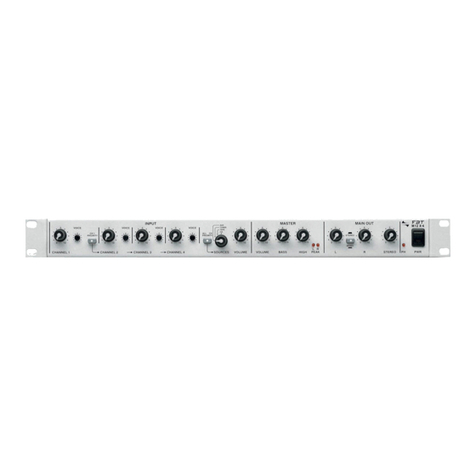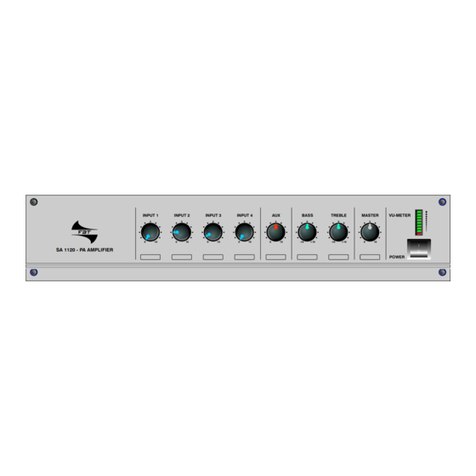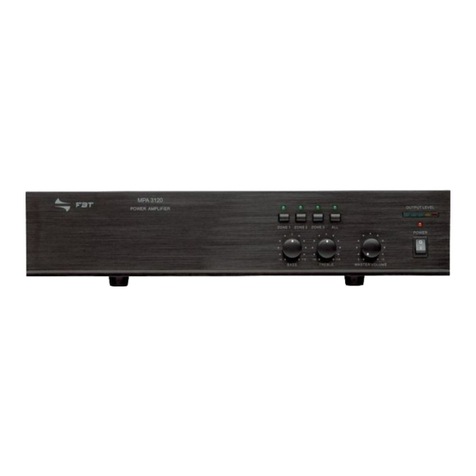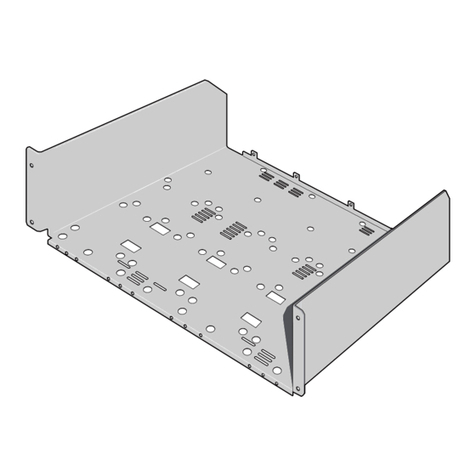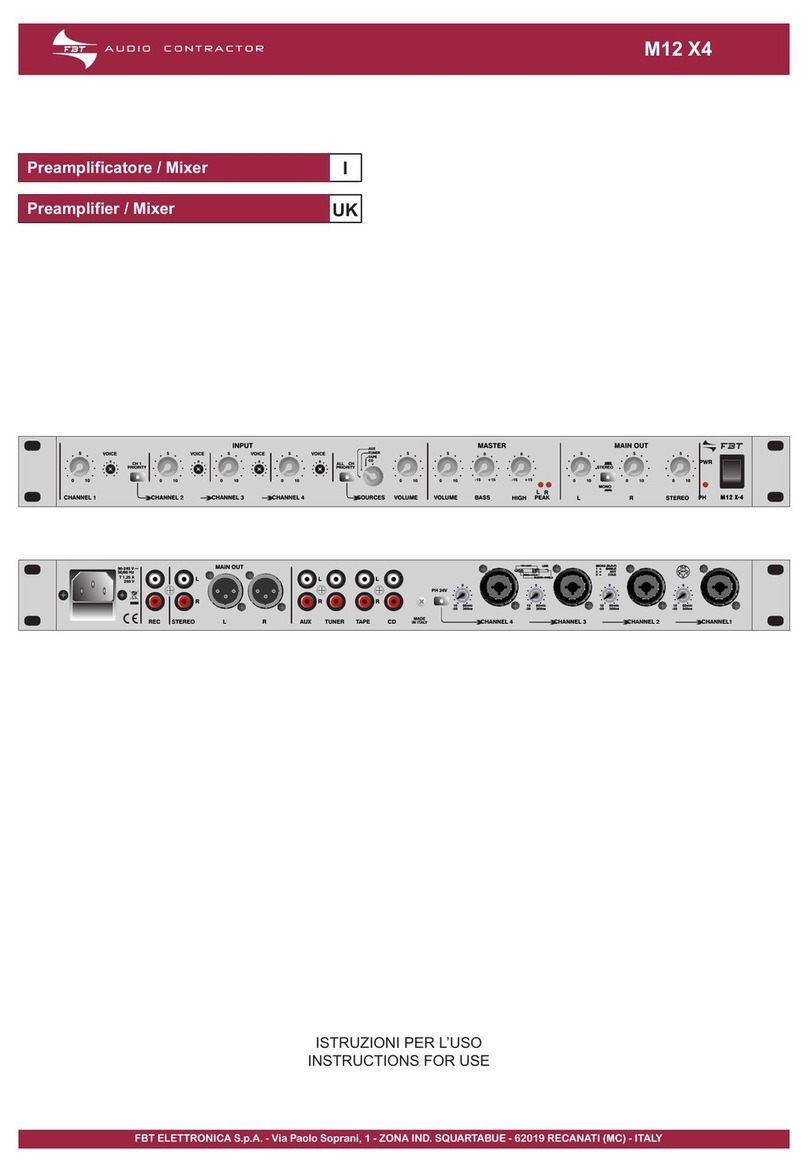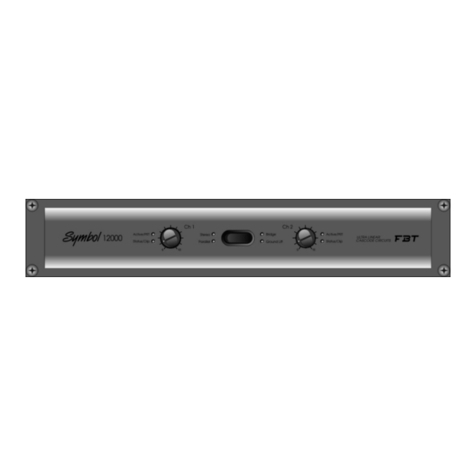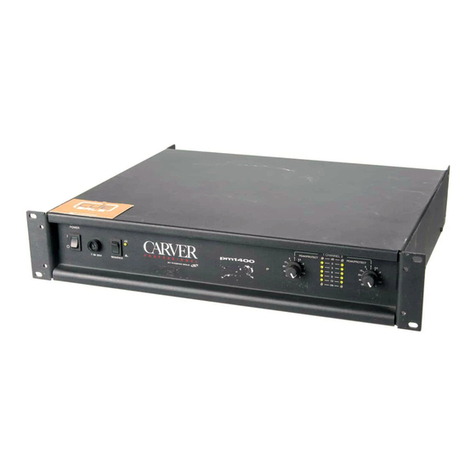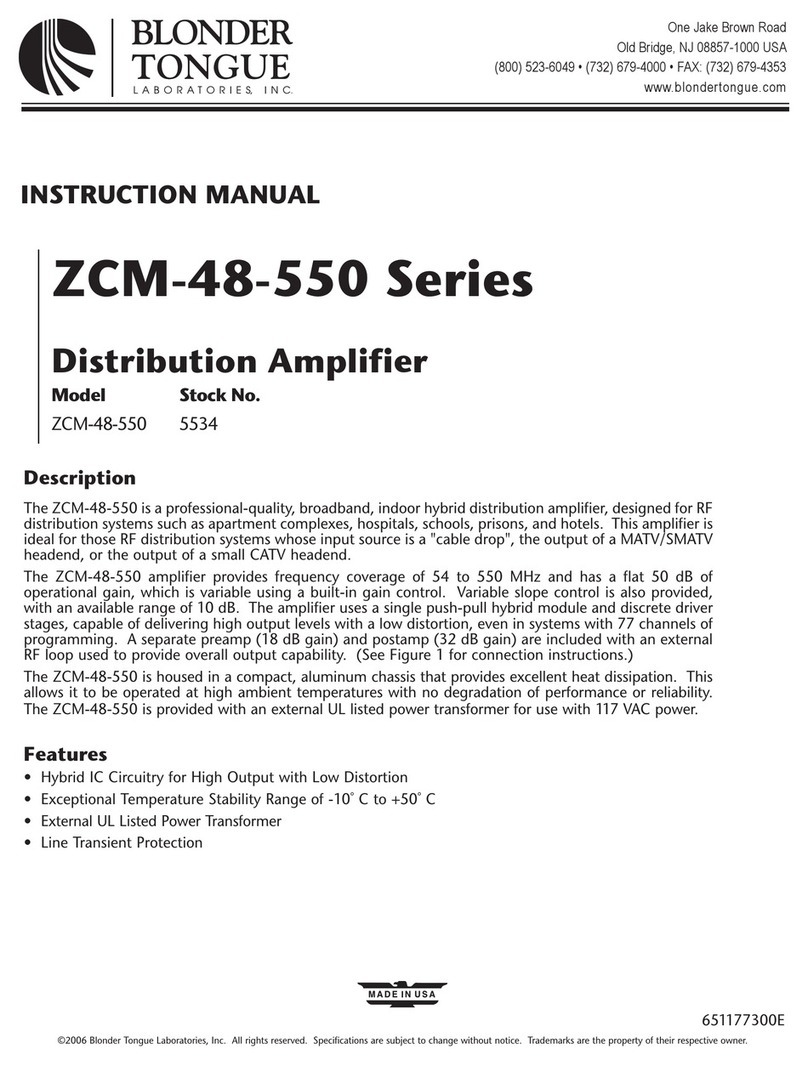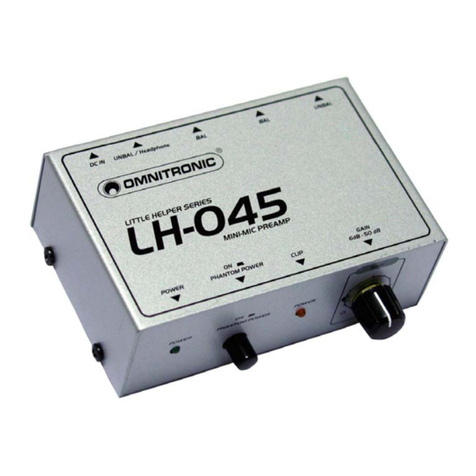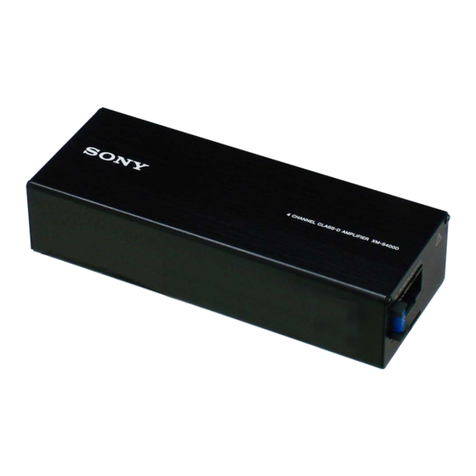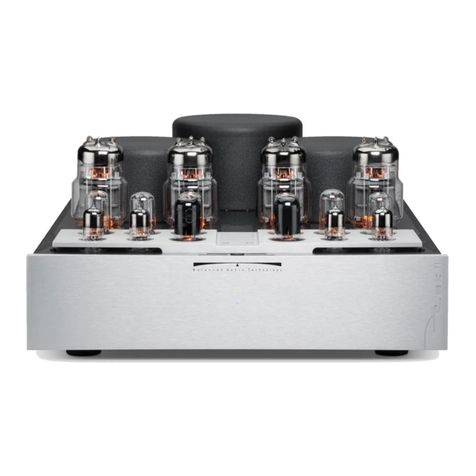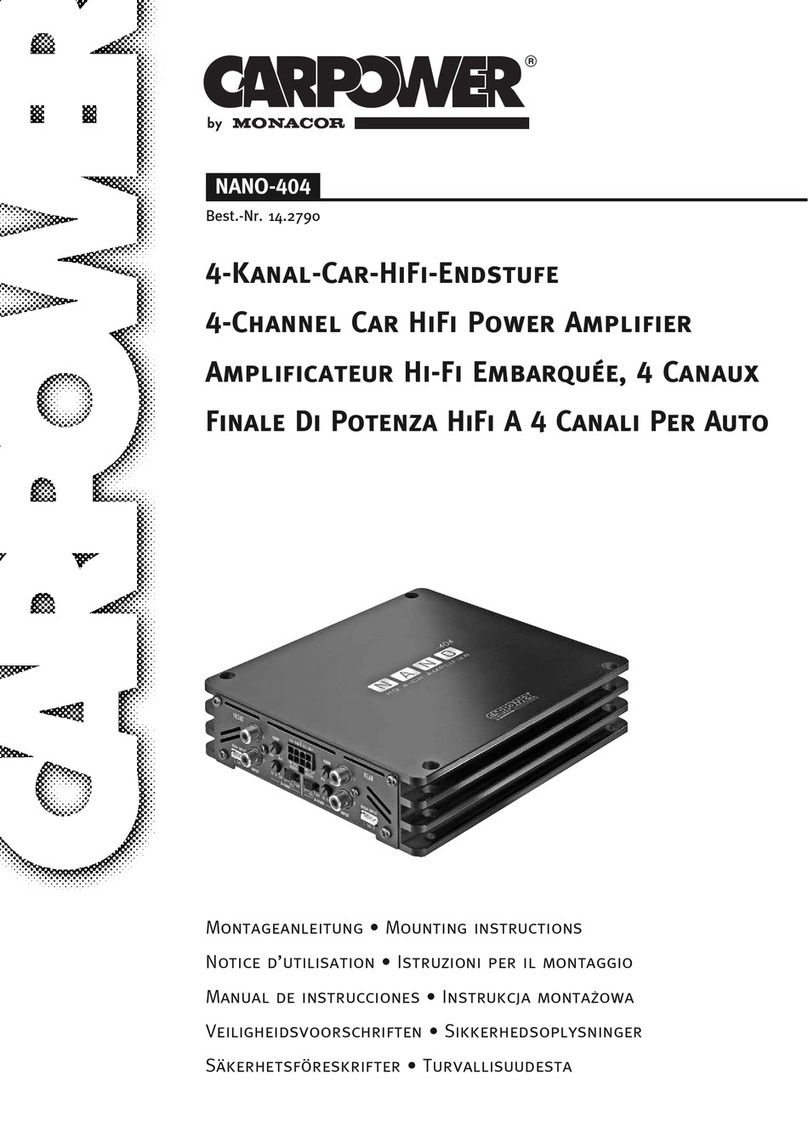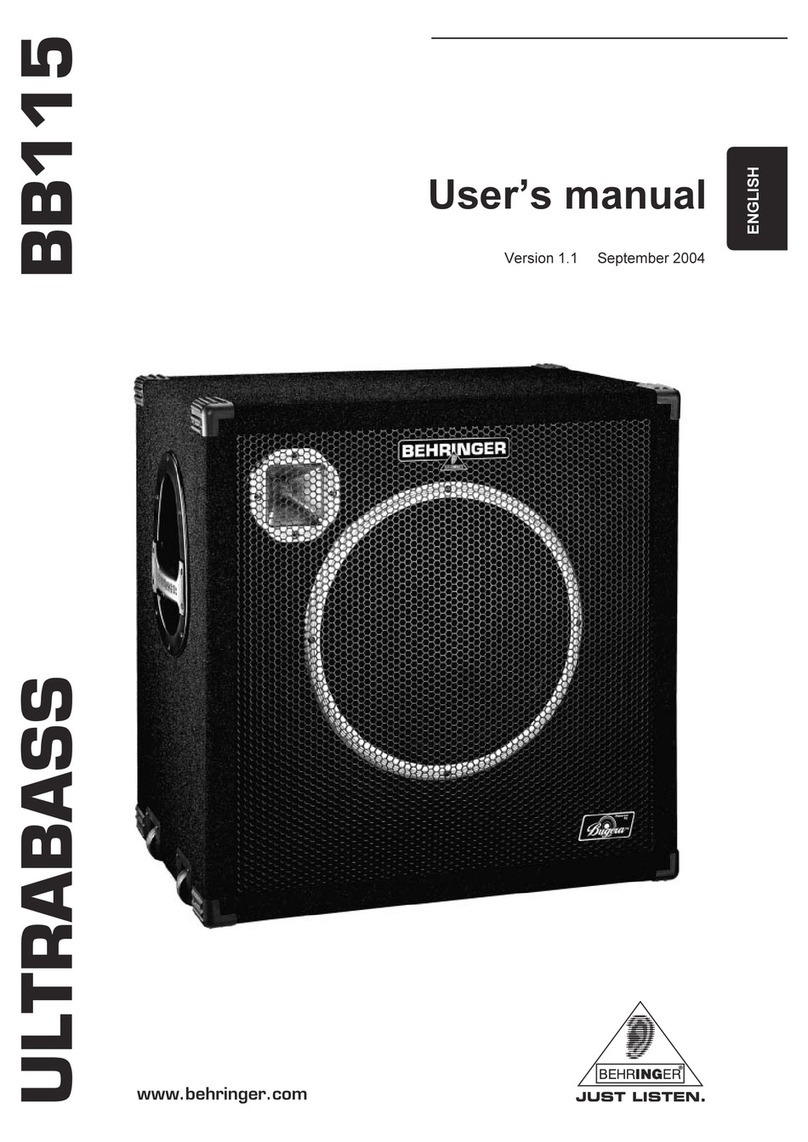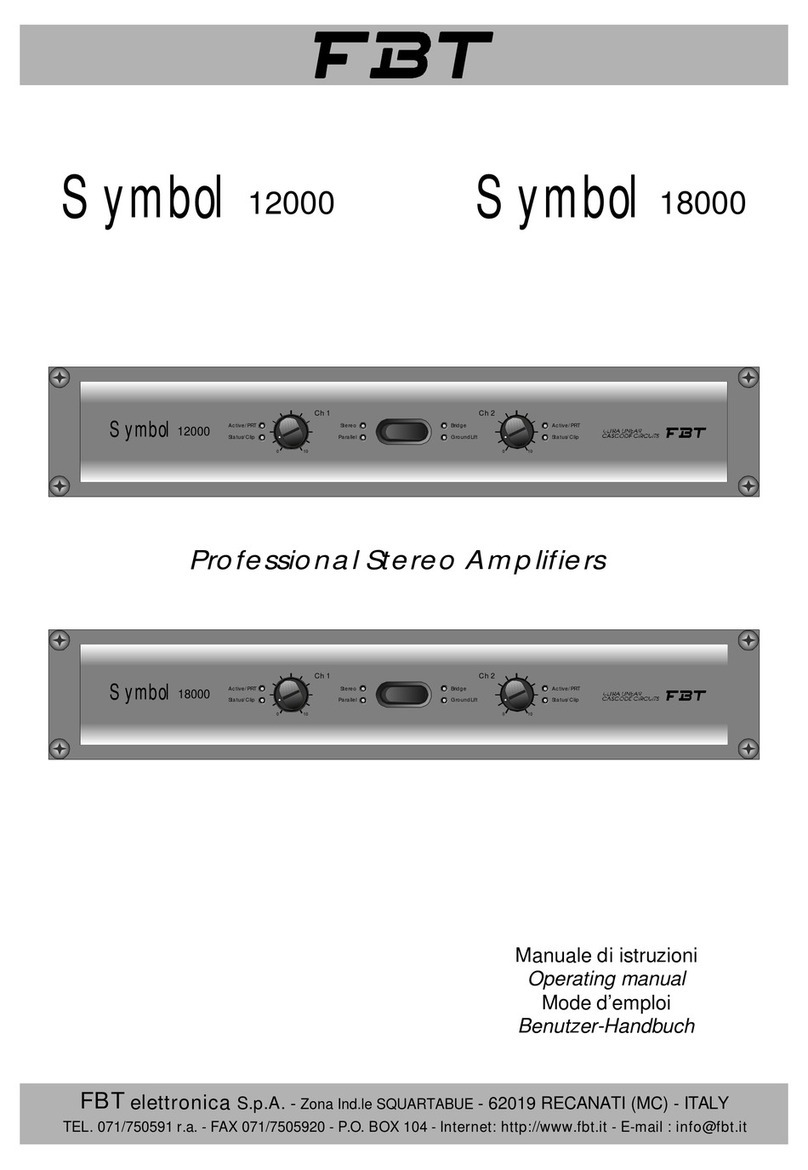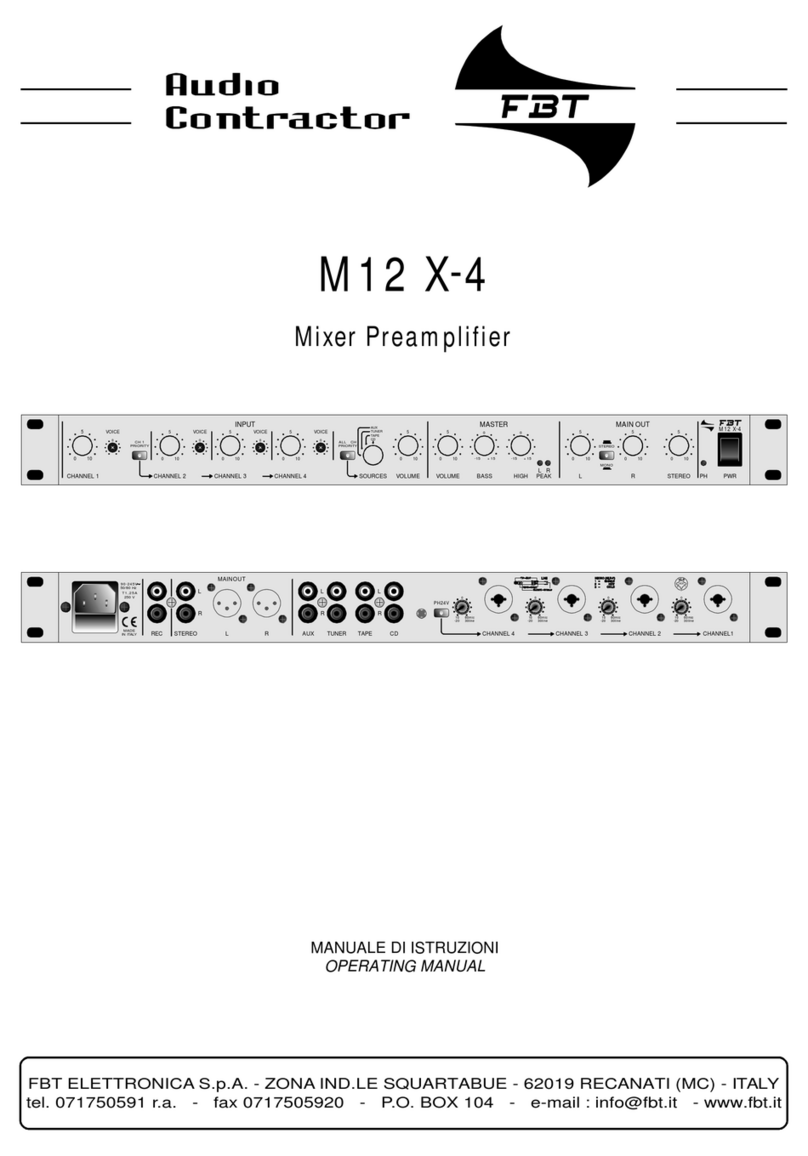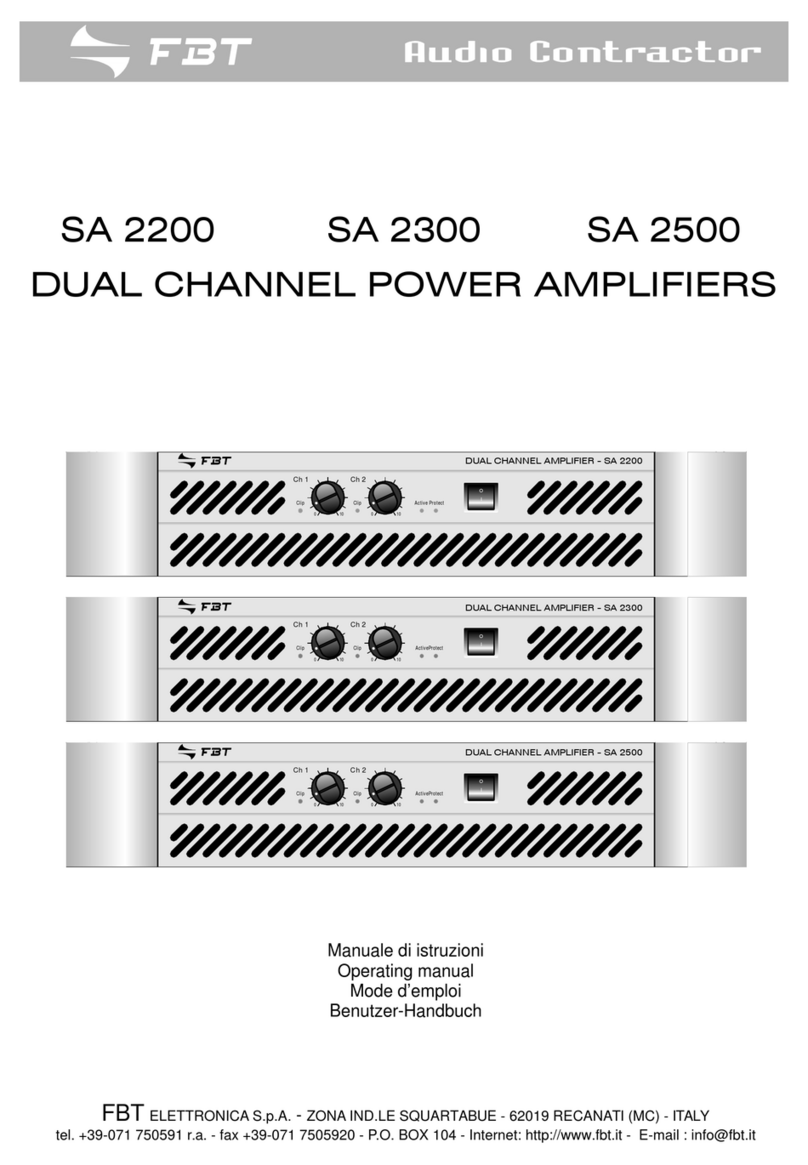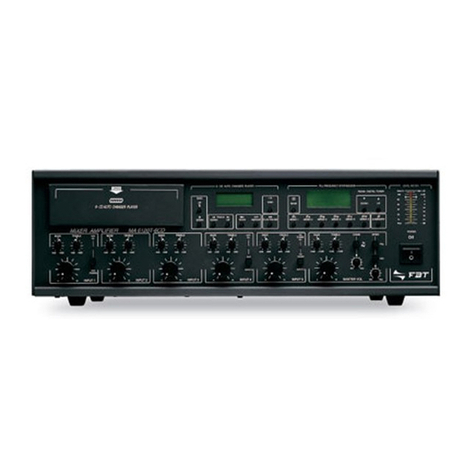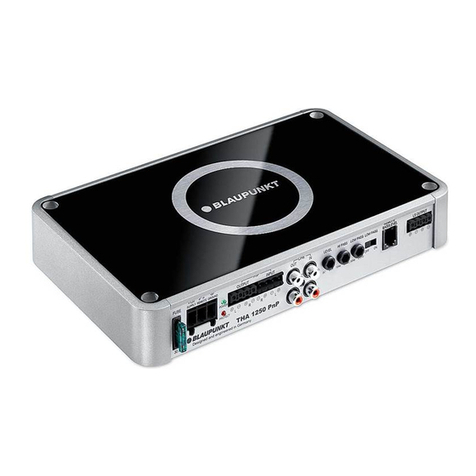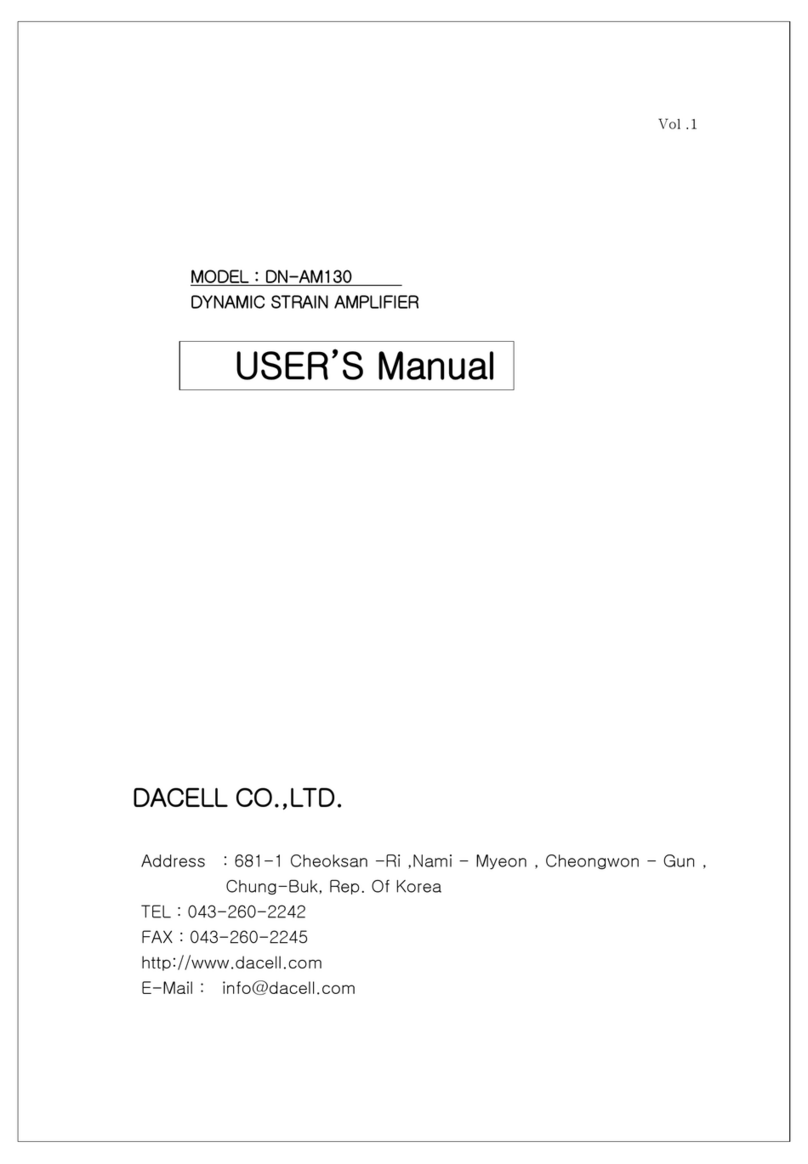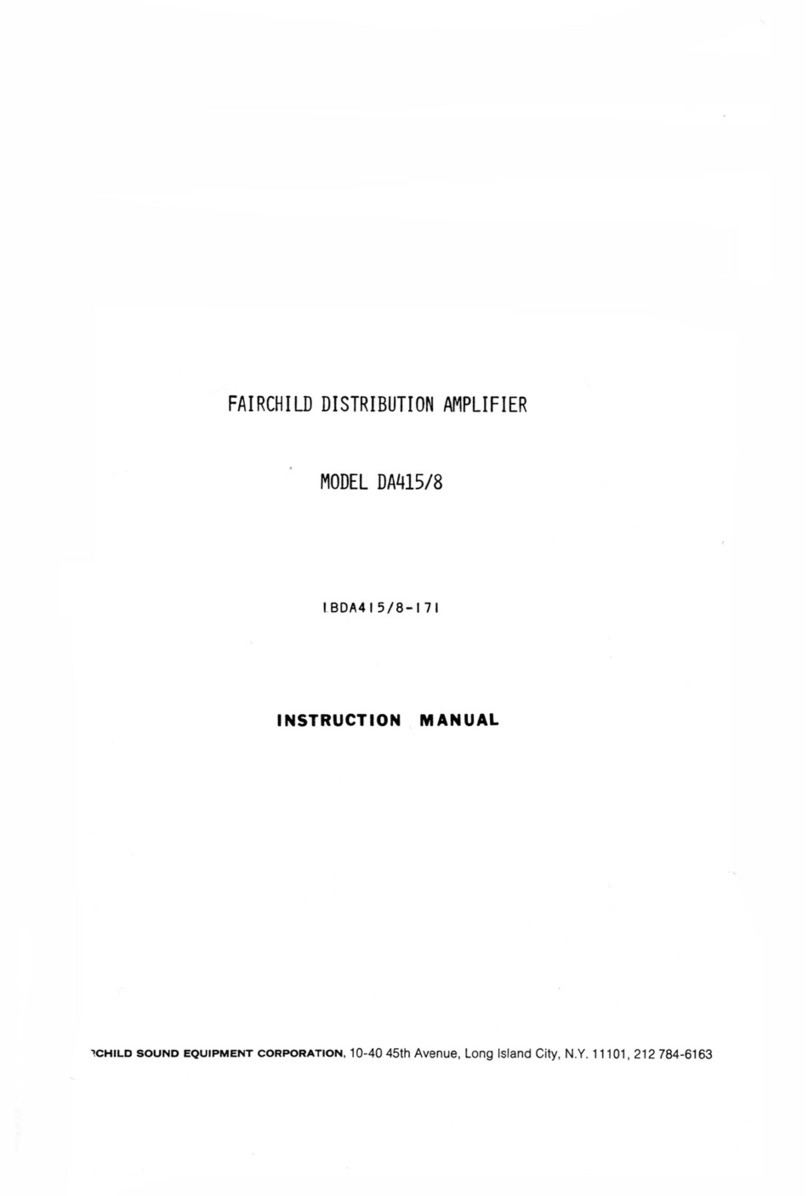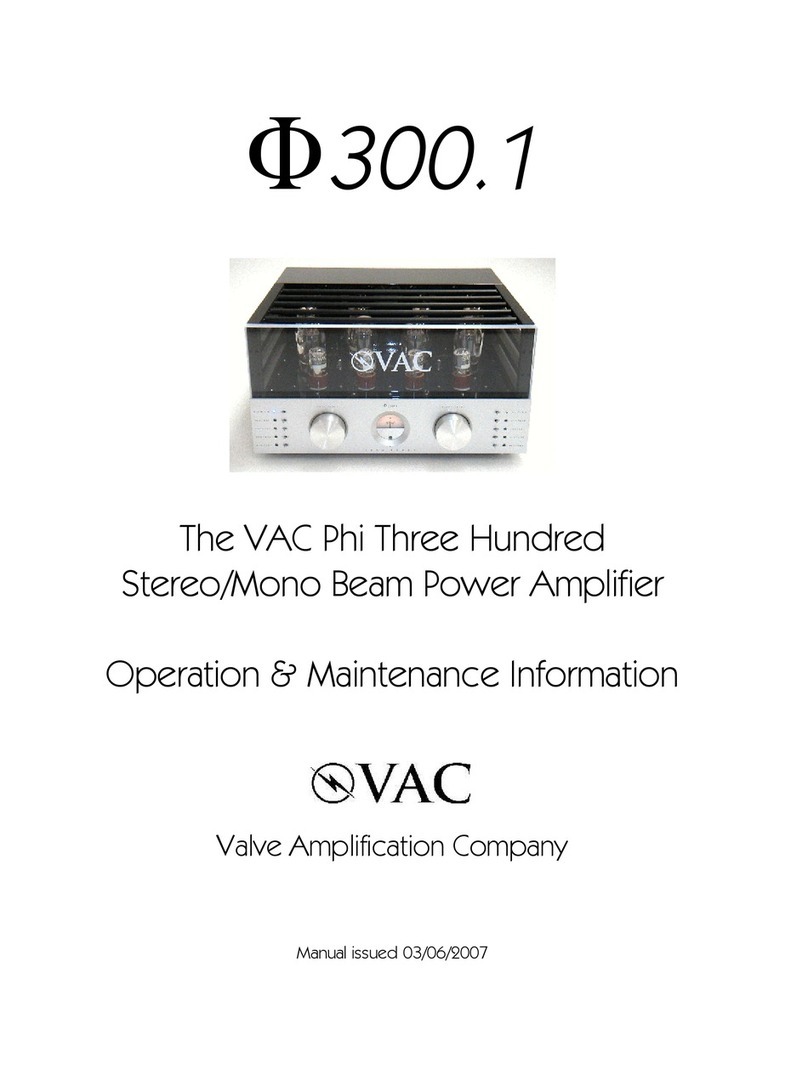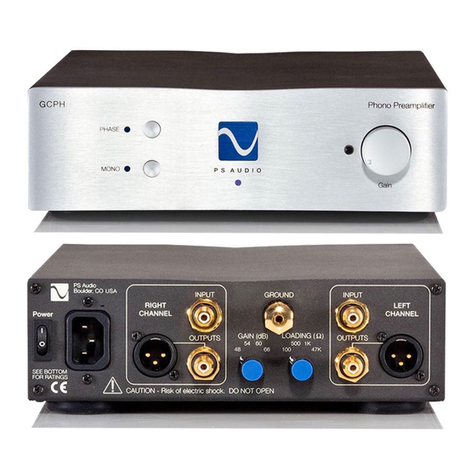FD
15
1.1 ALIMENTATION ET MISE A LA TERRE
L’appareil est prévu pour être alimenté sur secteur à une tension de
230 V ± 10% 50/60 Hz. Il est possible d’utiliser l’appareil également
avec une tension de secteur de 120 V ±10% 50/60 Hz; pour cela
mettre le sélecteur (34) situé sur le panneau arrière sur la position
“120 V”. Les systèmes compact de la Série MXA 3000 peuvent
également être alimentés par une source externe en courant
continu (24V), laquelle doit être branchée, en veillant à respecter
les polarités, aux bornes correspondantes du bornier (32).
Conformément aux normes de sécurité, l’interrupteur d’allumage
(7) est actif uniquement sur l’alimentation de secteur. L’appareil est
fourni avec un câble d’alimentation pourvu de conducteur de terre;
la terminaison de terre de la fiche de branchement sur secteur ne
doit en aucun cas être retirée. Brancher la fiche (11) de l’appareil
au secteur d’alimentation électrique en utilisant le câble fourni à
cet effet et s’assurer que la prise de secteur est raccordée à la
mise à la terre conformément à la réglementation. L’appareil est
protégé par deux fusibles (voir chap. 7.1, page 27).
1.1 EINSPEISUNG UND ERDUNG
Diese Geräte sind für den Betrieb mit einer Netzspannung
von 230 V ± 10% 50/60 Hz ausgelegt. Es besteht auch die
Möglichkeit, das Gerät mit einer Netzspannung von 120V ±10%
50/ 6 0 Hz zu betreiben; zu dies em Zweck muss der
Wählschal ter (3 4) an der Rüc kseite in die Posi tion
“120 V” gestellt werden. Die kompakte Systeme Serie MXA 3000
können auch über eine externe Gleichstromspeisung mit einer
Spannung von 24V versorgt werden, die unter Berücksichtigung
der Pole an die entsprechenden Endstücke des Klemmenbretts
(32) angelegt wird. Gemäß den Sicherheitsvorschriften wirkt der
Schalter EIN/AUS (7) nur auf die Netzstromversorgung.
Mit dem Gerät wird ein Stromkabel mit Erdschutzleiter geliefert;
das Erdschutz-Endstück des Netzsteckers darf auf keinen Fall
entfernt werden. Stecken Sie den Netzstecker (11) des Geräts in
die Steckdose und versichern Sie sich, dass die Steckdose einen
normentsprechenden Erdleiter besitzt. Das Gerät ist durch zwei
Sicherungen geschützt (siehe Abschnitt 7.1, Seite 27).
PRECAUTIONS HINWEISE
1.3 INSTALLATION
Ces appareils peuvent être installés sur une armoire rack standard
19” en se servant des accessoires optionnels appropriés.
1.3 INSTALLATION
Diese Geräte sind für die Montage in einem 19”-Standard-Rack
ausgelegt, für die die entsprechenden optional erhältlichen
Zubehörteile verwendet werden.
1.2 CONSEILS DE SECURITE
Pour un bon fonctionnement de l’appareil il est nécessaire d’assurer
une ventilation correcte. Éviter de placer l’appareil dans un meuble
sans aération ou de boucher les fentes de ventilation et en particulier
la prise d’air latérale du ventilateur de refroidissement. Éviter en
outre de placer l’appareil à proximité de sources de chaleur. Il est
recommandé d’intercaler un panneau d’aération entre les appareils.
Toute intervention à l’intérieur de l’appareil, comme la sélection
de certains modes d’emploi, l’application d’accessoires ou la
substitution de fusibles, doit être exclusivement effectuée par un
personnel expert: le retrait du couvercle rend accessibles certaines
parties présentant des risques d’électrocution. Avant d’enlever
le couvercle, contrôler toujours que le cordon d’alimentation est
débranché. En cas de chute accidentelle de liquides sur l’appareil,
débrancher immédiatement la fiche d’alimentation et contacter
le centre d’assistance FBT le plus proche. Il est possible de
relier d’autres appareils à la connexion de masse du châssis (12)
seulement pour la fonction de protection des signaux à bas niveau:
cette prise ne doit pas être utilisée pour la connexion de sécurité
du châssis à la terre.
1.2 SICHERHEITSANWEISUNGEN
Füreinen fehlerfreien Betriebs des Geräts ist einen geeignete
Belüftung erforderlich. Schließen Sie das Gerät nicht in einem
geschlossenen Schrank ohne Belüftung ein oder verschließen
Sie nicht die Belüftungsschlitze, insbesondere die seitliche
Luftzufuhr des Belüfters. Vermeiden Sie außerdem das Aufstellen
des Geräts in der Nähe von Wärmequellen. Es wird empfohlen
ein Belüftungspaneel zwischen nebeneinander installierten
Geräten zu montieren. Jeder Eingriff im Innern des Geräts,
wie die Wahl einiger Anwendungen, die Montage von Zubehör
oder das Auswechseln von Schmelzsicherungen darf nur von
Fachpersonal vorgenommen werden: die Entfernung des Deckels
legt Komponenten mit Stromschlaggefahr frei. Vor Öffnen des
Deckels ist immer sicherzustellen, daß der Netzstecker abgezogen
ist. Bei versehentlichem Vergießen von Flüssigkeiten auf dem Gerät
muß der Netzstecker unver züglich abgezogen und das nächste
FBT Kundendienstzentrum verständigt werden. Die Verbindung des
Erdschutzleiters des Gehäuses (12) erlaubt auch die Verbindung
anderer Geräte, allerdings mit auschließlicher Schutzfunktion
gegen Niederfrequenzsignale: dieser Anschluß darf nicht für die
Verbindung des Erdschutzleiters verwendet werden.
Recommandations pour l’élimination du produit
conformément à la Directive Européenne 2002/96/
EC Au terme de son utilisation, le produit ne doit pas
être éliminé avec les déchets urbains. L’appareil doit
être remis à l’un des centres de tri sélectif agréés par
l’administration communale ou à un revendeur assurant
ce service. L’élimination différenciée des appareils électroniques
(WEEE) permet non seulement d’éviter les retombées négatives
pour l’environnement et la santé dues à une élimination incorrecte,
mais aussi de récupérer les matériaux qui le composent et permet
ainsi d’effectuer d’importantes économies en termes d’énergie et
de ressources. Pour rappeler l’obligation d’éliminer séparément les
appareils électroniques, le produit porte le symbole d’un caisson
à ordures barré.
Wichtiger Hinweis für die Entsorgung des produkts
in übereinstimmung mit der EG-richtlinie 2002/96/
EC Am Ende seiner Nutzzeit darf das Produkt nicht
zusammen mit dem Siedlungsabfall beseitigt werden,
sondern es muss bei den zu diesem Zweck von den
städtischen Behörden eingerichteten Sammelstellen
oder zu den Fachhändlern, die einen Rücknahmeservice anbieten,
gebracht werden. Die getrennte Entsorgung von Elektro- und
Elektronik-Altgeräten (WEEE - Waste Electric and Electronic
Equipment) vermeidet mögliche negative Auswirkungen auf die
Umwelt und die Gesundheit infolge einer nicht vorschriftsmäßigen
Entsorgung. Zudem wird die Wiederverwertung der Materialen,
aus denen das Gerät besteht, ermöglicht, so dass eine bedeutende
Einsparung an Energie und Ressourcen erzielt wird. Aus diesem
Grund ist das Produkt mit dem Symbol einer durchgestrichenen
Mülltonne gekennzeichnet.
Ce produit est conforme aux Directives de la
Communauté Européenne auxquelles il est soumis.
Dieses Produkt entspricht den
diesbezüglichen EU-Richtlinien.





















